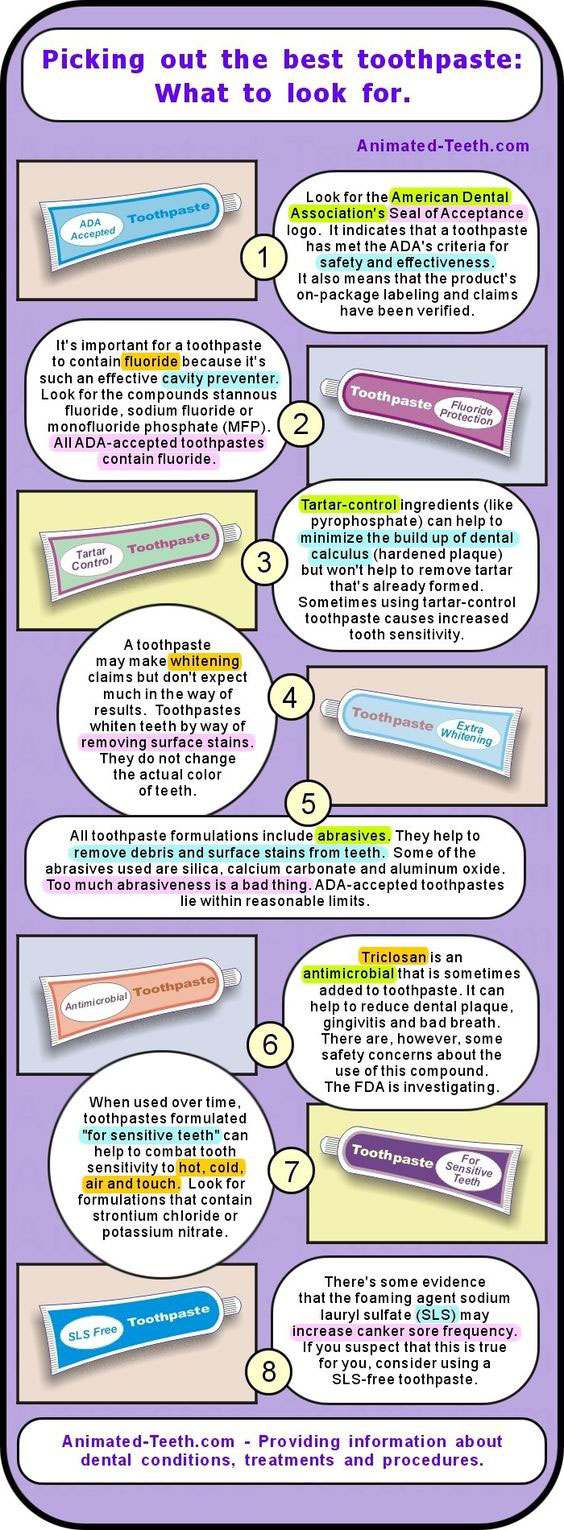Toothpaste options galore! Sometimes our patients tell us they just want to buy plain, old, regular fluoride toothpaste. When they are out shopping, there are just too many different types of toothpaste to choose from.
We get it!
Decision fatigue is a real thing. Having a basic toothpaste available to grab quickly would sometimes be better than having to choose from so many different types, each tailored to specific needs.
However, some toothpaste options are great.
In this post, we will try to weed through the many options of toothpaste that are available. Here is a wonderful infographic to help you work through at least some of the choices out there.
In the meantime, if you are lucky enough to find some basic fluoride toothpaste, we appreciate that your life will be a little bit easier for that moment!

Here’s a bullet list that sums up the infographic. Sometimes seeing information presented in more than one way makes it easier to consume.
- ADA Accepted – well it is an American infographic, but next time you’re shopping in the states for toothpaste at least you’ll know what it means. Basically it has met the American Dental Association’s criteria for safety and effectiveness. Also, that the claims made on the package have been verified.
- Fluoride – pretty self explanatory. The toothpaste either contains fluoride or not. Fluoride has been proven to be an amazing cavity fighter. There have been many scientific studies as well as what we see in our clinic as to children who grow up in cities with fluoridated water have far fewer cavities. Consider fluoride rinse or tablets for yourself or your child.
- Tartar-control – this toothpaste will minimize the build up of hardened plaque which is also known as tartar. It won’t remove existing tartar though. Sometimes tartar-control toothpaste can cause increased tooth sensitivity.
- Whitening – don’t expect much in the way of results from these. Whitening toothpaste may remove surface stains but don’t change the color of the teeth.
- Abrasives – all toothpastes contain abrasives to help clean the teeth. Too much abrasiveness can be bad, ADA-accepted toothpastes lie within reasonable limits. Here is a list of many common toothpastes with their level of abrasiveness. Low abrasive is 0 and regarded as harmful is 150-250. Interesting to see some common toothpastes in that harmful area. Abrasiveness Index of Common Toothpastes.
- Antimicrobial toothpastes contain Triclosan which can help to reduce dental plaque, gingivitis and bad breath. There are some safety concerns about this compound and both Canada and the USA are researching it more.
- SLS (sodium lauryl sulfate) is a foaming agent that may increase canker sore frequency. Look for SLS-free if that is a concern for you.
Not to confuse the issue but we do sell MI Paste in our office. This paste helps to remineralize the surface of the teeth and can be applied directly where it’s needed. It is excellent for strengthening tooth enamel and reducing sensitivity.
As well as Plaque HD toothpaste (it colours plaque so you can more easily brush it off), we have take-home whitening kits available and we also sell Sonicare electric toothbrushes.
Book your appointment today with Kits Family Dental, a professional and friendly family dentist in Kitsilano.
The infographic is from animated-teeth.com.





